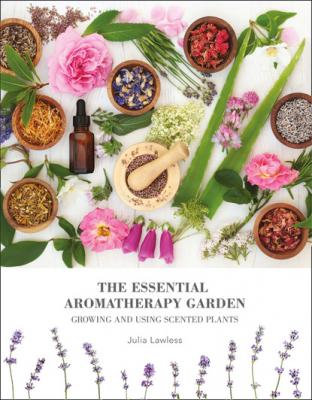The Essential Aromatherapy Garden. Julia Lawless
Читать онлайн.| Название | The Essential Aromatherapy Garden |
|---|---|
| Автор произведения | Julia Lawless |
| Жанр | Здоровье |
| Серия | |
| Издательство | Здоровье |
| Год выпуска | 0 |
| isbn | 9780008351854 |
HarperCollinsPublishers
1 London Bridge Street
London SE1 9GF
First published by Kyle Cathie Ltd in 2001
This edition first published by HarperCollinsPublishers in 2019
Copyright © HarperCollinsPublishers
Text copyright © Julia Lawless 2001, 2019
Cover and interior design by Pete Clayman
Cover photography by iStock.com
A catalogue record for this book is available from the British Library
All rights reserved under International and Pan-American Copyright Conventions. By payment of the required fees, you have been granted the nonexclusive, non-transferable right to access and read the text of this e-book on screen. No part of this text may be reproduced, transmitted, downloaded, decompiled, reverse engineered, or stored in or introduced into any information storage retrieval system, in any form or by any means, whether electronic or mechanical, now known or hereinafter invented, without the express written permission of HarperCollins e-books.
Source ISBN 978-0-00-832328-8
Ebook ISBN 9780008351854
Version 2019-02-21
CONTENTS
Sue Minter, Chelsea Physic Garden
The History of the Scented Garden
Aromatic Herbs for Health & Cooking
A Perfumery & Aromatherapy Border
4
Fragrant Exotica & Container Plants
5
Secrets From the Still Room
6
Planning an Aromatherapy Garden
7
Aromatherapy Plant Portraits
Searchable Terms
Credits and Resources
About the Publisher
Perfume has the most extraordinary power to affect emotion and mood. It can also stimulate memory in ways varying from the intimate and nostalgic to the downright disagreeable. And most of this is based on the essential oils derived from plants, or synthesised in imitation of what they produce naturally.
Entire civilisations such as that of ancient Egypt (and, to some extent, medieval France) have based their religious and social functioning around perfume. In Britain, the importance of the aromatic in medieval times (when scent was thought to be the main defence against disease) seems to be reemerging in the greater and greater desire for perfumed products used in the household, in health care and, of course, in the garden.
I am therefore delighted that Julia Lawless has written this practical guide to growing and using scented plants while placing their use in a sound historical context.
It is also good to know that any encouragement of the essential oil industry supports the economics of countries such as China, Brazil, Turkey, Indonesia, India, Morocco and Egypt. And, unlike medicinal herbs (the vast majority of which are taken from the wild), these materials are cropped, making their use far less of a conservation concern.
I wish the reader joy in the creation of a scented haven. May it stimulate many happy memories!
Sue Minter
CURATOR, CHELSEA PHYSIC GARDEN
Medicinal plants have been grown at Chelsea Physic Garden since the seventeenth century. Today there are displays of over 400 medicinal species.
Deryck Dillon Premium
I have been working in the field of aromatherapy and medical herbalism for more than forty years, and over the past three decades I have been fortunate enough to have also had the opportunity to create several aromatic gardens. Growing scented plants and herbs has brought the whole field of aromatic medicine vividly to life for me and has helped enrich my understanding and transform it from simply one of theory into a direct experience of the inherent nature of the plants themselves. Gradually I have come to know the distinct character and temperament of the different plants: mint, for example, is a gregarious type that will take over the whole garden if not kept in check; wild thyme is tough and independent, used to putting up with difficult conditions; others, like chamomile and marigold, are mild and easy-going by nature and will even help to look after other plants around them. Of course, many of the tropical plants familiar to the aromatherapist, such as sandalwood, clove or cinnamon, are impossible to cultivate in colder climates. Nevertheless, other exotic plants, such as the madonna lily or the hardy jasmine species, have adapted to more temperate climates, while tender species, such as citrus trees and scented pelargoniums, will thrive given the protection of a greenhouse or conservatory.
In the first scented garden that I designed, I took on an already well-established garden. At the back of the house was an overgrown potager with a pleached lime hedge running
